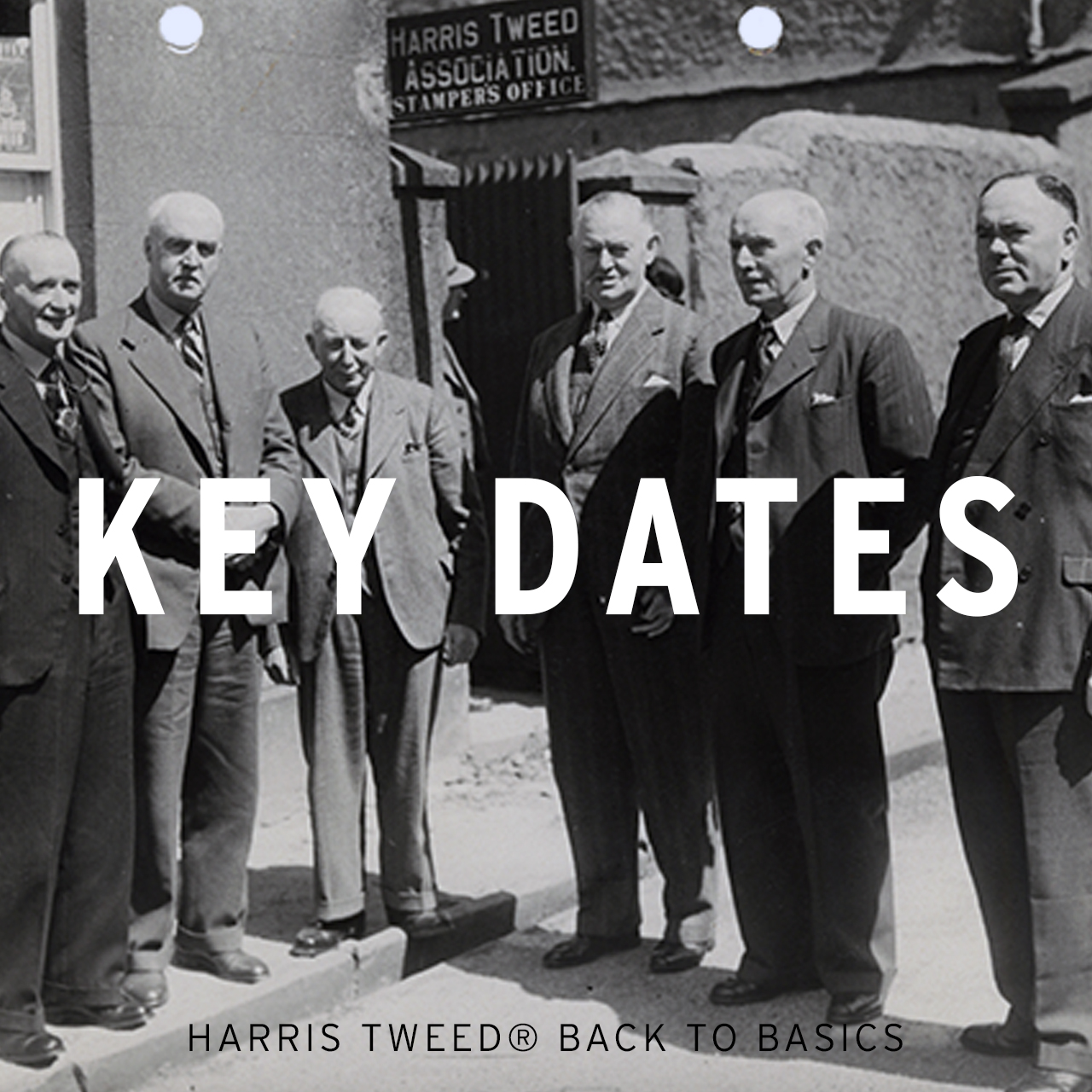Back to Basics series – Day 2
26th March
Key Dates in our History
Between 1903 and 1906 the tweed-making industry was in full swing and, in Lewis, carding and spinning mills were built to meet ever-increasing orders. With tweed gaining popularity it became clear that steps were needed to protect the good name of Harris Tweed® cloth from imitations.
In 1909, The Harris Tweed Association Limited was formed to register the famous Orb and Maltese Cross with the words Harris Tweed underneath as a trademark. This certification mark was registered in 1910 and stamping began in 1911.

In 1934, the trademark definition was altered to allow the use of island millspun yarn in addition to handspun, enabling the industry to make a huge leap in production. The stamped yardage increased tenfold and continued to increase, with the peak figure of 7.6 million yards being reached in 1966.
In the early 1990s, the industry set out to transform and modernise itself by producing a double width loom, re-training weavers, introducing tougher standards and marketing a new wider, softer, lighter tweed. This work was consolidated when the Harris Tweed Authority took over from the Harris Tweed Association as a result of the 1993 Act of Parliament. Thus, the definition of Harris Tweed® cloth became statutory and forever tied the cloth to the Islands.
